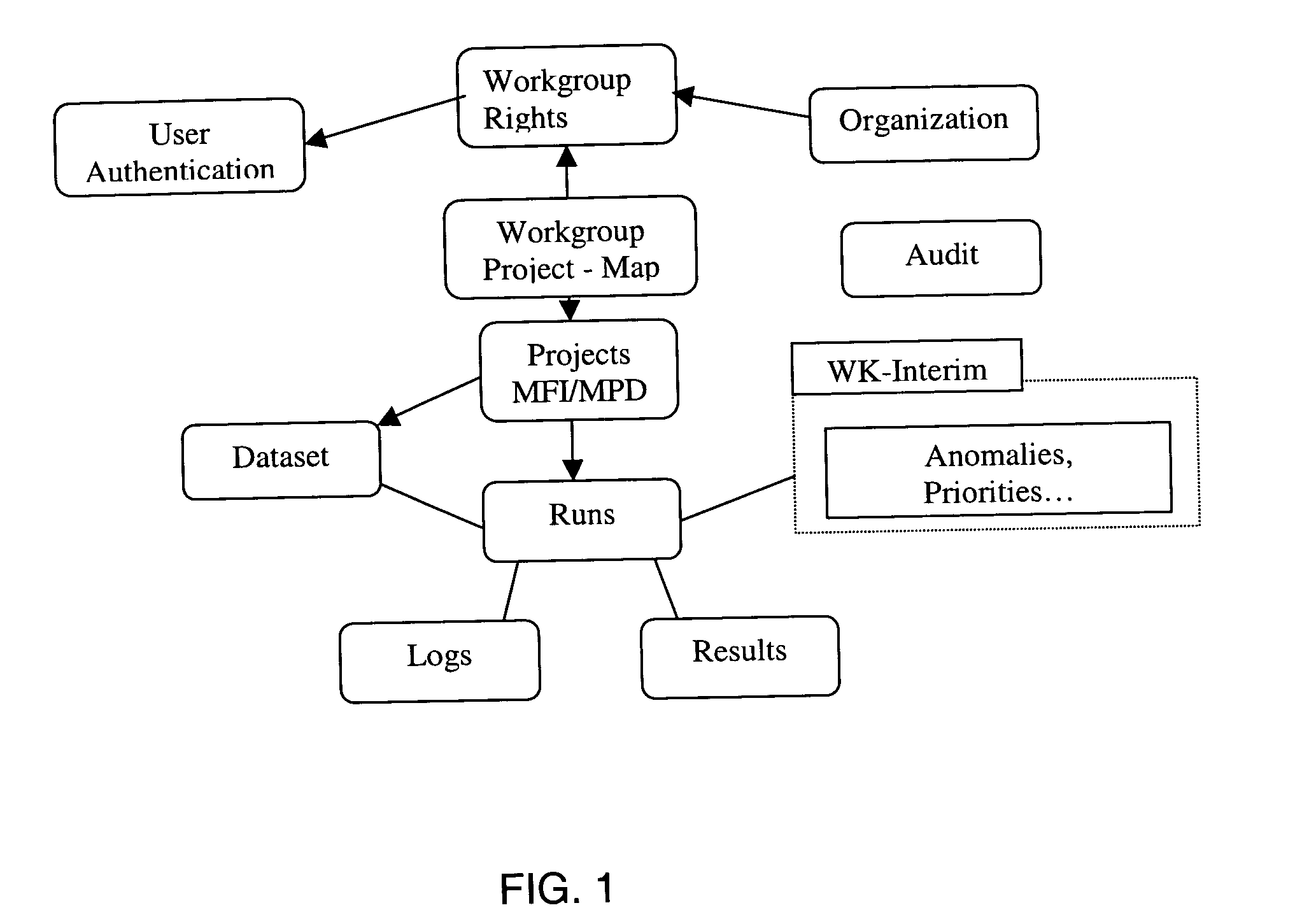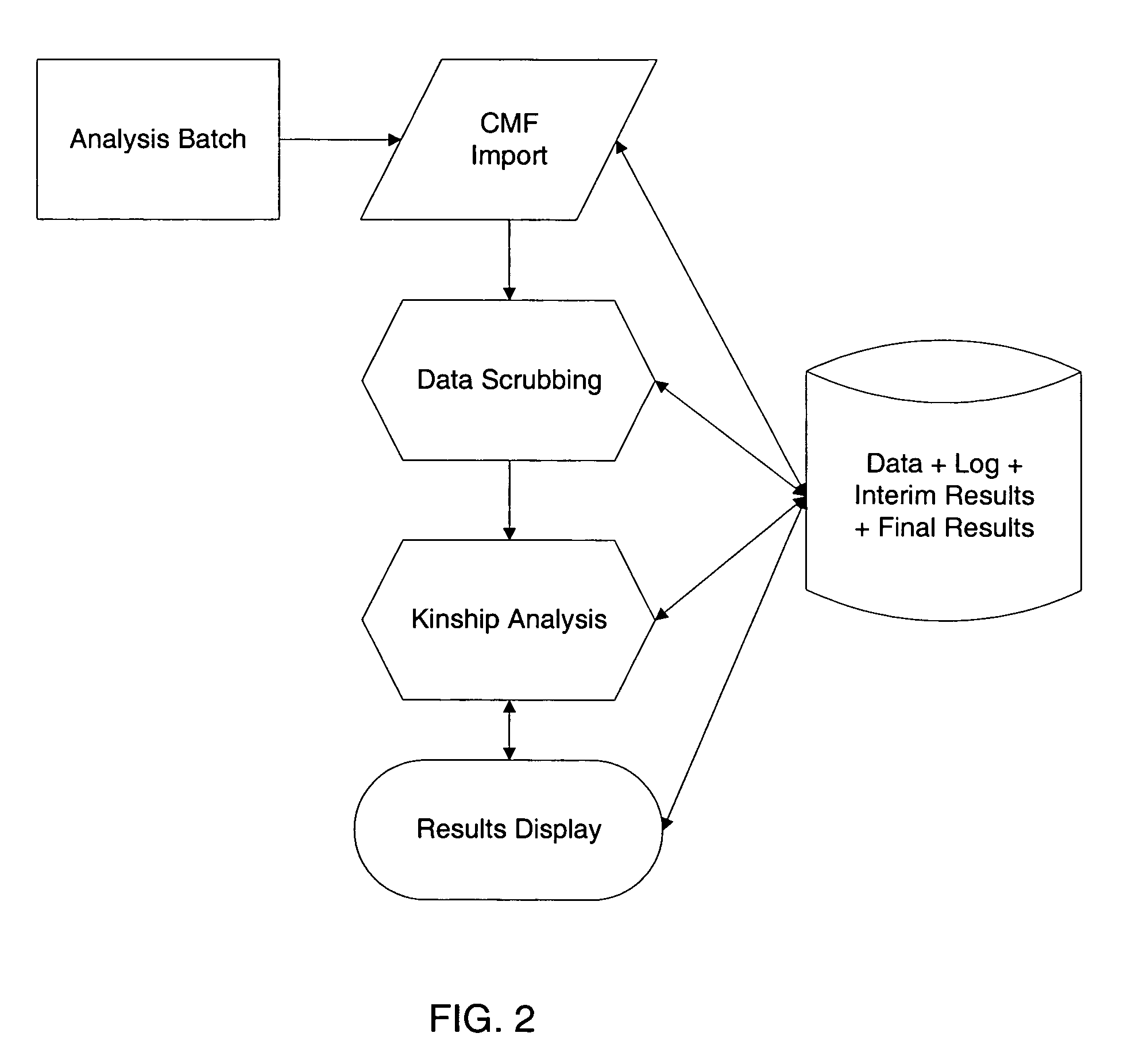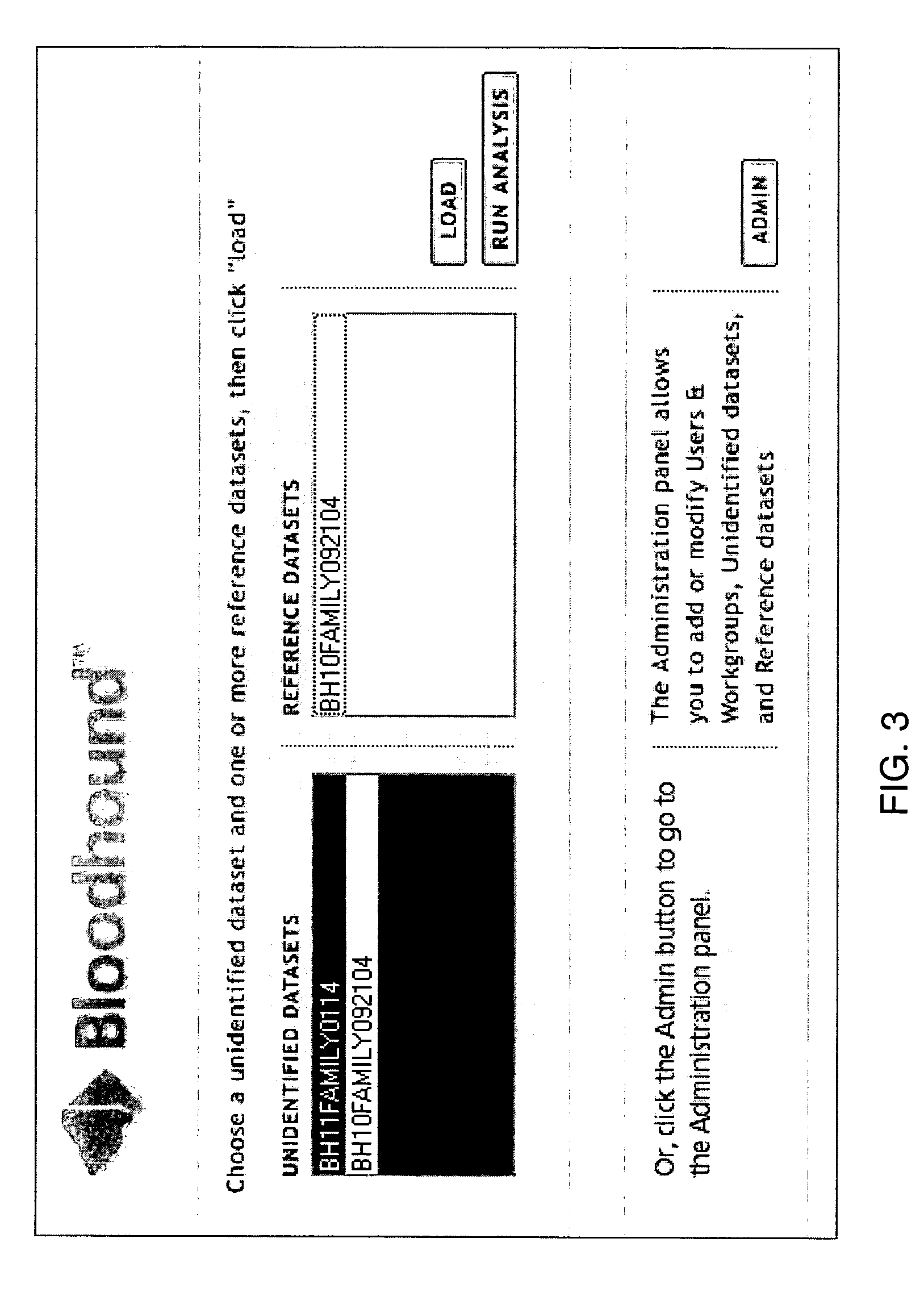Kinship analysis program for missing persons and mass disaster
a technology of kinship analysis and mass disaster, applied in the field of kinship analysis application, can solve the problems of inability to find intelligent agents to perform these analyses, inconvenient and inflexible, existing methods are limited to a small number of experts, etc., and achieve the effect of facilitating and expediting the processing of large data volumes and facilitating widespread use of data sources
- Summary
- Abstract
- Description
- Claims
- Application Information
AI Technical Summary
Benefits of technology
Problems solved by technology
Method used
Image
Examples
Embodiment Construction
[0052] The system and method of the present invention provides a graphical user interface that is capable of kinship analysis for missing persons and mass disasters. Turning now descriptively to the drawings, in which similar reference characters denote similar elements throughout the several views.
[0053]FIG. 1 illustrates a flow chart of components relationships in accordance with the invention. The load panel allows users to view, load, and analyze available datasets based on security levels with an intuitive interface does not require the user to have programming or statistical expertise. FIG. 2 is an illustration of the load panel in accordance with the invention. Each dataset is characterized by the CODIS CMF file selected for import. For a Mass Fatality Incident, the dataset can include victim / relatives. Each dataset can have multiple runs, where a run is defined by an Analysis with its set of logs, results and interim tables. FIG. 3 is a flowchart of the dataset relevant pro...
PUM
| Property | Measurement | Unit |
|---|---|---|
| Structure | aaaaa | aaaaa |
| Ratio | aaaaa | aaaaa |
Abstract
Description
Claims
Application Information
 Login to View More
Login to View More - R&D
- Intellectual Property
- Life Sciences
- Materials
- Tech Scout
- Unparalleled Data Quality
- Higher Quality Content
- 60% Fewer Hallucinations
Browse by: Latest US Patents, China's latest patents, Technical Efficacy Thesaurus, Application Domain, Technology Topic, Popular Technical Reports.
© 2025 PatSnap. All rights reserved.Legal|Privacy policy|Modern Slavery Act Transparency Statement|Sitemap|About US| Contact US: help@patsnap.com



